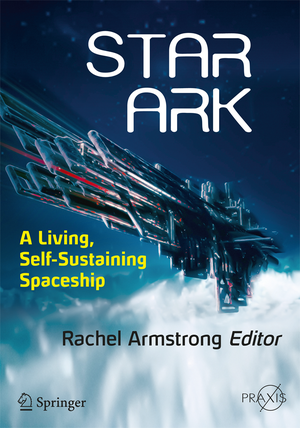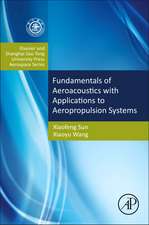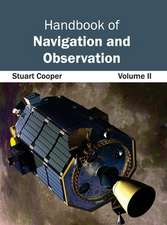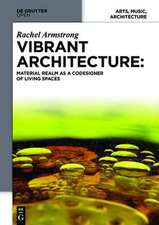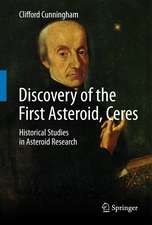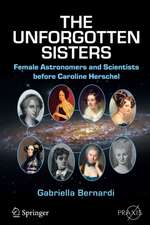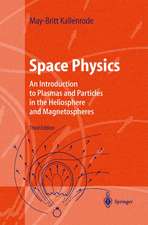Star Ark: A Living, Self-Sustaining Spaceship: Springer Praxis Books
Editat de Rachel Armstrongen Limba Engleză Paperback – 23 noi 2016
Din seria Springer Praxis Books
-
 Preț: 294.46 lei
Preț: 294.46 lei -
 Preț: 223.45 lei
Preț: 223.45 lei -
 Preț: 193.12 lei
Preț: 193.12 lei -
 Preț: 167.85 lei
Preț: 167.85 lei -
 Preț: 288.98 lei
Preț: 288.98 lei -
 Preț: 323.74 lei
Preț: 323.74 lei -
 Preț: 401.38 lei
Preț: 401.38 lei -
 Preț: 264.12 lei
Preț: 264.12 lei - 8%
 Preț: 513.00 lei
Preț: 513.00 lei -
 Preț: 190.01 lei
Preț: 190.01 lei -
 Preț: 218.16 lei
Preț: 218.16 lei -
 Preț: 312.06 lei
Preț: 312.06 lei - 17%
 Preț: 414.04 lei
Preț: 414.04 lei -
 Preț: 216.41 lei
Preț: 216.41 lei -
 Preț: 262.27 lei
Preț: 262.27 lei -
 Preț: 264.35 lei
Preț: 264.35 lei -
 Preț: 167.63 lei
Preț: 167.63 lei -
 Preț: 284.81 lei
Preț: 284.81 lei -
 Preț: 259.08 lei
Preț: 259.08 lei -
 Preț: 305.47 lei
Preț: 305.47 lei -
 Preț: 244.14 lei
Preț: 244.14 lei -
 Preț: 227.85 lei
Preț: 227.85 lei -
 Preț: 285.25 lei
Preț: 285.25 lei -
 Preț: 295.56 lei
Preț: 295.56 lei -
 Preț: 357.17 lei
Preț: 357.17 lei -
 Preț: 275.79 lei
Preț: 275.79 lei -
 Preț: 257.08 lei
Preț: 257.08 lei -
 Preț: 349.71 lei
Preț: 349.71 lei -
 Preț: 272.45 lei
Preț: 272.45 lei -
 Preț: 270.27 lei
Preț: 270.27 lei - 8%
 Preț: 456.51 lei
Preț: 456.51 lei -
 Preț: 352.34 lei
Preț: 352.34 lei - 8%
 Preț: 394.80 lei
Preț: 394.80 lei -
 Preț: 320.65 lei
Preț: 320.65 lei -
 Preț: 325.29 lei
Preț: 325.29 lei -
 Preț: 253.11 lei
Preț: 253.11 lei -
 Preț: 192.86 lei
Preț: 192.86 lei -
 Preț: 313.40 lei
Preț: 313.40 lei -
 Preț: 150.51 lei
Preț: 150.51 lei -
 Preț: 233.34 lei
Preț: 233.34 lei -
 Preț: 286.78 lei
Preț: 286.78 lei -
 Preț: 212.01 lei
Preț: 212.01 lei -
 Preț: 366.83 lei
Preț: 366.83 lei -
 Preț: 299.99 lei
Preț: 299.99 lei -
 Preț: 232.27 lei
Preț: 232.27 lei -
 Preț: 284.58 lei
Preț: 284.58 lei -
 Preț: 212.45 lei
Preț: 212.45 lei -
 Preț: 159.81 lei
Preț: 159.81 lei -
 Preț: 349.48 lei
Preț: 349.48 lei - 20%
 Preț: 2061.61 lei
Preț: 2061.61 lei
Preț: 383.76 lei
Nou
Puncte Express: 576
Preț estimativ în valută:
73.43€ • 76.67$ • 60.77£
73.43€ • 76.67$ • 60.77£
Carte tipărită la comandă
Livrare economică 01-07 aprilie
Preluare comenzi: 021 569.72.76
Specificații
ISBN-13: 9783319310404
ISBN-10: 3319310402
Pagini: 300
Ilustrații: XXII, 492 p. 127 illus., 107 illus. in color.
Dimensiuni: 168 x 240 x 28 mm
Greutate: 1.13 kg
Ediția:1st ed. 2017
Editura: Springer International Publishing
Colecția Springer
Seriile Springer Praxis Books, Space Exploration
Locul publicării:Cham, Switzerland
ISBN-10: 3319310402
Pagini: 300
Ilustrații: XXII, 492 p. 127 illus., 107 illus. in color.
Dimensiuni: 168 x 240 x 28 mm
Greutate: 1.13 kg
Ediția:1st ed. 2017
Editura: Springer International Publishing
Colecția Springer
Seriile Springer Praxis Books, Space Exploration
Locul publicării:Cham, Switzerland
Cuprins
Introduction by Rachel Armstrong.- Overview by Andrew Tziolas.- Metaphysics of Reality in Space by Rachel Armstrong.- Seeding the Universe with Life by Michael Mautner.- Space chemistry by Martin Hanczyc.- Living soils by Rachel Armstrong.- Bacterial worlds by Simon Park.- Nature in space by Koert van Mensvoort.- The experience of space by Nelly Ben Hayoum.- Space architecture by Richard Hyams.- Extremophiles by Sarah Jane Pell.-Shrinking the human by Arne Hendriks.- Human/mechanicals hybrids by Kevin Warwick.- Space birth by Lucy McCrae, Susan Crawford-Young, and Lynne Harper.- Establishing the ecological being by Rachel Armstrong.- Ecology of Mind by Noam Chomsky.- Humanity in space by Steve Fuller.- Ecological politics by Jane Bennett.- Very large organizations by Jordan Geiger.- Architects building planets by Mark Morris.
Recenzii
“The chapters are well referenced, giving readers the opportunity to follow-up points of interest. ... Professor Armstrong is to be congratulated on weaving together many different perspectives on the far future of space exploration – in an age of ultra-specialisation, that in itself is simulating and refreshing.” (Ian Crawford, The Observatory, Vol. 137 (1261), December, 2017)
“This peculiar and interesting book is suitable if you are curious about the matter of long space travels, like e.g. hundreds of years, and the problem of the colonization of new worlds. The solution presented here is a serious study on the so-called ‘generation ships’, which are well-known among science-fiction readers. … An intriguing book about an unusual subject.” (Gabriella Bernardi, Astrocom et al., astrocometal.blogspot.de, January, 2017)Notă biografică
Rachel Armstrong is a researcher developing novel sustainable technologies that harness some of the properties of life and has been developing a range of projects over the last 5 years that propose new approaches that are life-promoting rather than resource conserving. She has been developing prototypes and models for sustainable environmental technologies and collaborating with architectural practices and scientific research laboratories (University of Southampton, University of West England, University of Glasgow and the Southern University of Denmark). These prototypes have been recognized as having potential applications for industry and society, as noted in a Nature article.
Armstong’s interest in space dates back to the 1990s. Armstrong is project leader for the Icarus Interstellar group, working on laying the groundwork for the construction of a starship in Earth’s orbit within a hundred years and is Director of The Institute for Interstellar Studies for Sustainability and the Environment.
Throughout her career Armstrong has been recognized as a pioneer. The International Journal of Environmental Investing nominated her as among the most influential environmental academics in May 2014, and she was a coauthor on a paper published in 2013 for the International Journal of General Systems, awarded the distinction as best paper by Taylor & Francis. She has been named as one of the Wired 2013 Smart List, as one of the 2013 ICON 50 and one of the ten people in the UK that may shape the UK’s economic recovery by Director Magazine in 2012. In the same year Armstrong was nominated as one of the most inspiring top nine women by Chick Chip magazine and as one of the BBC Focus Magazine’s August 2011 edition’s ‘ideas that could change the world.’ Her TED Talk “Architecture that repairs itself” was voted as #1 on Diane von Furstenberg’s playlist and as #3 on Bjork’s list of favorite talks, heard more than 750,000 times. She was recently appointed Professor of Experimental Architecture at the University of Newcastle.
Armstong’s interest in space dates back to the 1990s. Armstrong is project leader for the Icarus Interstellar group, working on laying the groundwork for the construction of a starship in Earth’s orbit within a hundred years and is Director of The Institute for Interstellar Studies for Sustainability and the Environment.
Throughout her career Armstrong has been recognized as a pioneer. The International Journal of Environmental Investing nominated her as among the most influential environmental academics in May 2014, and she was a coauthor on a paper published in 2013 for the International Journal of General Systems, awarded the distinction as best paper by Taylor & Francis. She has been named as one of the Wired 2013 Smart List, as one of the 2013 ICON 50 and one of the ten people in the UK that may shape the UK’s economic recovery by Director Magazine in 2012. In the same year Armstrong was nominated as one of the most inspiring top nine women by Chick Chip magazine and as one of the BBC Focus Magazine’s August 2011 edition’s ‘ideas that could change the world.’ Her TED Talk “Architecture that repairs itself” was voted as #1 on Diane von Furstenberg’s playlist and as #3 on Bjork’s list of favorite talks, heard more than 750,000 times. She was recently appointed Professor of Experimental Architecture at the University of Newcastle.
Textul de pe ultima copertă
As space ventures have become more numerous, leading scientists and theorists have offered ways of building a living habitat in a hostile environment, taking an ‘ecosystems’ view of space colonization. The contributors to this volume take a radical multi-disciplinary view of the challenge of human space colonization through the ongoing project Persephone. This book fundamentally challenges prevalent ideas about sustainability and proposes a new approach to resource austerity and conservation and providing truly sustainable approaches that are life-promoting. Readers will learn the details of the plans for Persephone – a real project that is part of the company Icarus Interstellar’s plans for the design and engineering of a living interior on a worldship to be constructed in Earth’s orbit within 100 years. Although the timeframe itself is only an estimate, since it is contingent on many significant developments, including funding and technological advances, the industry consensus is that within 100 years we will see manned space exploration beyond our solar system. This notion is shared by organizations such as the Initiative for Interstellar Studies and the DARPA-funded 100-year starship project. This book specifically develops the principles for the construction of a living habitat within a worldship – a multi-generational starship that contains its own world that supports colonists as it travels across great distances between stars at a speed much slower than light. Far from being a sterile industrial setup, such as the ISS, or even being a bucolic suburbia as proposed by Gerard O’Neill in the 1970s, this worldship will provide the pre-conditions for sustaining life beyond Earth’s environment, which may also lead to the evolution of non-terrestrial ecologies. Drawing on the principles of ecopoiesis and insights offered by the Biosphere 2 experiment that demonstrated what we have to learn about ecosystem construction, this book proposes first designing the soils of such a space. It should then be possible to set up the conditions that a first generation of colonists may experience in leaving our solar system to find new worlds to settle - perhaps in spreading life throughout the universe. Although the book takes a unique view of ecology and sustainability within the setting of a traveling starship it is equally concerned with the human experience on artificial worlds. Chapters come from a range of multi disciplinary thinkers who shed light on the brave new future ahead from different angles.
Caracteristici
Develops the principles for the construction of a living habitat within a space ship Analyzes cutting-edge scientific developments in plans for space colonization from a multi-disciplinary perspective Brings together a variety of discussions on an original, people-centered approach to issues of space habitation
